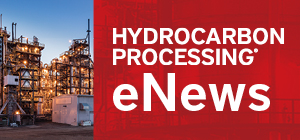Europe
BASF to build emissions catalysts plant in Poland
Construction of the new 40,000 square meter facility – BASF’s largest in Europe – will begin before the end of 2012. The plant will start production in the first quarter of 2014. Additional expansion will follow, raising the total investment volume for the project to approximately €150 million.
Shell names Fluor downstream engineering partner for Europe, Middle East
Under terms of the agreement, Fluor will provide design, project and construction management, home-office and site-based engineering services. The agreement includes an option to be extended for another five years and opportunities to include Shell's upstream projects and other geographic regions.
Relief valve and flare action items: What plant engineers should know
This article can help the plant engineer review the concerns developed by the design engineer. Implementing field modifications without performing such a review is costly and exposes a facility to unjustified risks.
Surviving and thriving in era of enhanced OSHA PSM audits
The US agency is developing special emphasis programs to target specific industries, notably refining and chemicals, with owners facing rigid inspections and stiffer fines.
Update on the greenhouse gas regulation by the US EPA
The US Environmental Protection Agency (EPA) began regulating the emissions of greenhouse gases (GHGs) on January 2, 2011. Its long-awaited GHG controls guidance document, PSD and Title V Permitting G..
Consider new technologies to raise diesel yield in bottom-of-barrel products
The debate continues over adding a new delayed coker vs. a residue hydrocracker upstream of an existing delayed coker.
Low-pressure absorption of CO2 from flue gas: Plant economics with incentives
The precedent to this article, published in the April 2011 issue of Hydrocarbon Processing, discussed the chemical feasibility and process engineering design to absorb carbon dioxide (CO2) from flue g..
Improve integration opportunities for aromatics units—Part 1
An aromatics complex is a combination of processing units that can be used to convert petroleum naphtha and pyrolysis gasoline (pygas) into the basic petrochemical intermediates: benzene, toluene and ..
HP Reliability: Closed-oil-mist systems and maintenance cost avoidance
A recent Hydrocarbon Processing (HP) article conveyed an industry finding that dates back several decades: Oil mist successfully lubricates operating machinery, protects and preserves standby equipmen..
HP Integration Strategies: The energy water nexus
Whether or not you subscribe to the global warming and “peak oil” arguments, it is clear to almost everyone in the industrial world that “business as usual” is not sustainable inde..

- Evonik inaugurates its 100,000-tpy alkoxides plant in Singapore 8/27
- Borouge collaborates with Yokogawa on autonomous AI control room 8/27
- Vietnam to make switch to ethanol-blended fuel in move to boost U.S. imports 8/27
- Sherwin-Williams launches single-coat high-performance Acrolon 680 for industrial and marine assets 8/27
- Trump tariffs force much-needed petrochemicals contraction 8/27
- First of five pyrolysis reactors delivered to the tire recycling plant in Uddevalla 8/27




